一、系統(tǒng)調(diào)用mmap
虛擬內(nèi)存區(qū)域使用起始地址和結(jié)束地址描述,鏈表按起始地址遞增排序。兩系統(tǒng)調(diào)用區(qū)別:mmap指定的偏移的單位是字節(jié),而mmap2指定的偏移的單位是頁(yè)。ARM64架構(gòu)實(shí)現(xiàn)系統(tǒng)調(diào)用mmap。

二、系統(tǒng)調(diào)用munmap
系統(tǒng)調(diào)用munmap用來刪除內(nèi)存映射,它有兩個(gè)參數(shù):起始地址和長(zhǎng)度即可。它的主要工作委托給內(nèi)核源碼文件處理“mm/mmap.c”中的函數(shù)do_munmap。
vm_munmap -->do_munmap -->vma=find_vma(mm,start) -->error=__split_vma(mm,vma,start,0) -->last=find_vma(mm,end) -->interror=__split_vma(mm,last,end,1) -->munlock_vma_pages_all -->detach_vmas_to_be_unmapped -->unmap_region -->arch_unmap -->remove_vma_list
vma = find_vma(mm,start);//根據(jù)起始地址找到要?jiǎng)h除的第一個(gè)虛擬內(nèi)存區(qū)域vma
error = __split_vma(mm,vma,start,0);//如果只刪除虛擬內(nèi)存區(qū)域vma的部分,那么分裂虛擬內(nèi)存區(qū)域vma
last = find_vma(mm,end);//根據(jù)結(jié)束地址找到要?jiǎng)h除的最后一個(gè)虛擬內(nèi)存區(qū)域vma
int error = __split_vma(mm,last,end,1);//如果只刪除虛擬內(nèi)存區(qū)域last的一部分,那么分裂虛擬內(nèi)存區(qū)域vma
munlock_vma_pages_all;//針對(duì)所有刪除目標(biāo),如果虛擬內(nèi)存區(qū)域被鎖定在內(nèi)存中(不允許換出到交換區(qū)),調(diào)用函數(shù)解除鎖定
detach_vmas_to_be_unmapped;//調(diào)用此函數(shù),把所有刪除目標(biāo)從進(jìn)程虛擬內(nèi)存區(qū)域鏈表和樹中刪除,單獨(dú)組成一條臨時(shí)鏈表
unmap_region;//調(diào)用此函數(shù),針對(duì)所有刪除目標(biāo),在進(jìn)程的頁(yè)表中刪除映射,并且從處理器的頁(yè)表緩存中刪除映射
arch_unmap;//調(diào)用此函數(shù)執(zhí)行處理器架構(gòu)特定的處理操作
remove_vma_list;//調(diào)用此函數(shù),刪除所有目標(biāo)
三、物理內(nèi)存組織結(jié)構(gòu)
1.體系結(jié)構(gòu)
目前多處理器系統(tǒng)有兩種體系結(jié)構(gòu):
非一致內(nèi)存訪問(Non-Unit Memory Access,NUMA):指內(nèi)存被劃分成多個(gè)內(nèi)存節(jié)點(diǎn)的多處理器系統(tǒng)。訪問一個(gè)內(nèi)存節(jié)點(diǎn)花費(fèi)的時(shí)間取決于處理器和內(nèi)存節(jié)點(diǎn)的距離。
對(duì)稱多處理器(Sysmmetric Muti-Processor,SMP):即一致內(nèi)存訪問(Uniform Memory Access,UMA),所有處理器訪問內(nèi)存花費(fèi)的時(shí)間是相同的。
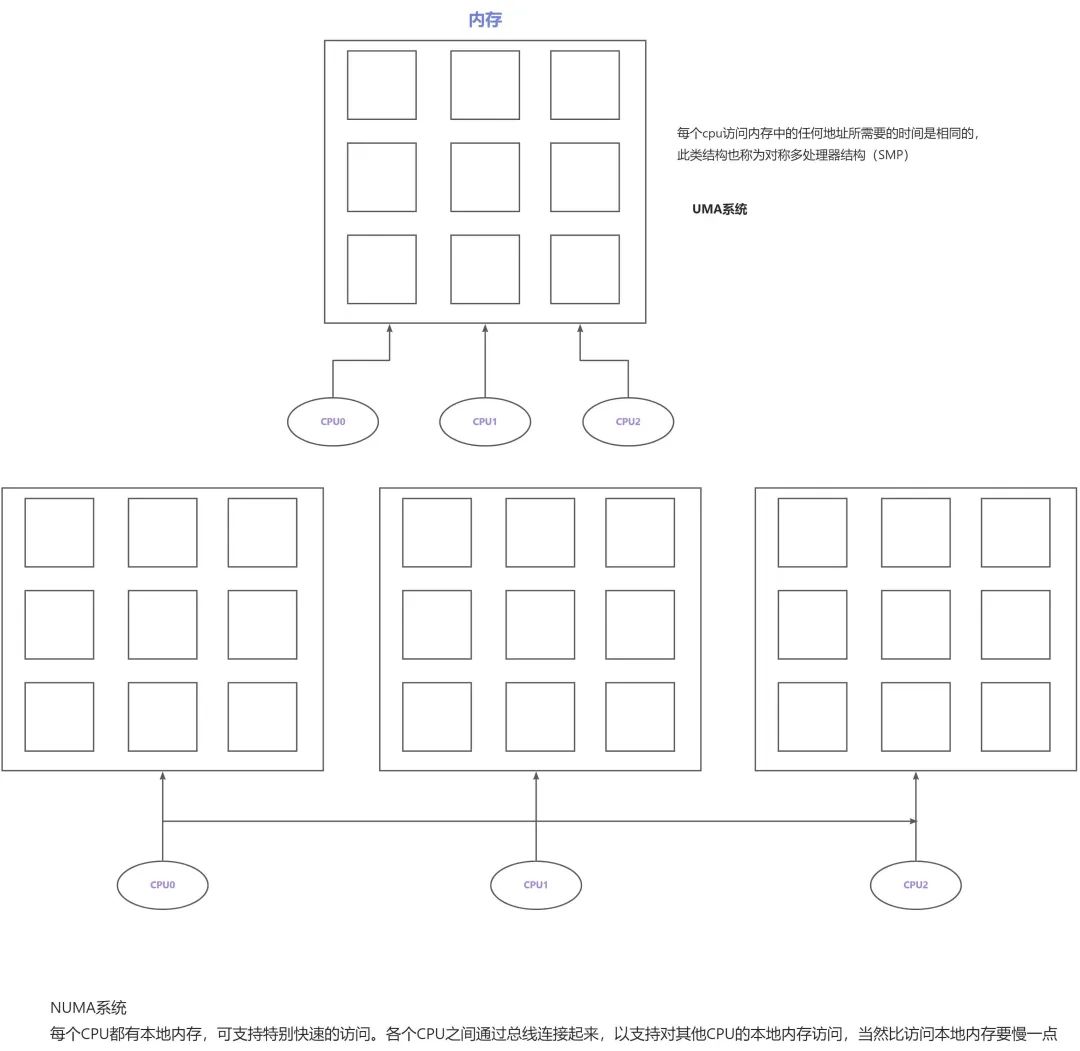
2.內(nèi)存模型
內(nèi)存模型是從處理器角度看到的物理內(nèi)存分布,內(nèi)核管理不同內(nèi)存模型的方式存在差異。內(nèi)存管理子系統(tǒng)支持3種內(nèi)存模型:
平坦內(nèi)存(Flat Memory):內(nèi)存的物理地址空間是連續(xù)的,沒有空洞。
不連續(xù)內(nèi)存(Discontiguous Memory):內(nèi)存的物理地址空間存在空洞,這種模型可以高效地處理空洞。
稀疏內(nèi)存(Space Memory):內(nèi)存物理地址空間存在空洞,如果要支持內(nèi)存熱插拔,只能選擇稀疏內(nèi)存模型。
3.三級(jí)結(jié)構(gòu)
內(nèi)存管理子系統(tǒng)使用節(jié)點(diǎn)(node)、區(qū)域(zone)、頁(yè)(page)三級(jí)結(jié)構(gòu)描述物理內(nèi)存。
3.1 內(nèi)存節(jié)點(diǎn)--->分為兩種情況
NUMA體系的內(nèi)存節(jié)點(diǎn),根據(jù)處理器和內(nèi)存距離劃分;
在具有不連續(xù)內(nèi)存的NUMA系統(tǒng)中,表示比區(qū)域的級(jí)別更高的內(nèi)存區(qū)域,根據(jù)物理地址是否連續(xù),每塊物理地址連續(xù)的內(nèi)存是一個(gè)內(nèi)存節(jié)點(diǎn)。
內(nèi)存節(jié)點(diǎn)使用結(jié)構(gòu)體pglist_data描述內(nèi)存布局
Linux內(nèi)核源碼如下:
typedefstructpglist_data{
structzonenode_zones[MAX_NR_ZONES];//內(nèi)存區(qū)域數(shù)組
structzonelistnode_zonelists[MAX_ZONELISTS];//備用區(qū)域列表
intnr_zones;//該節(jié)點(diǎn)包含內(nèi)存區(qū)域數(shù)量
#ifdefCONFIG_FLAT_NODE_MEM_MAP/*means!SPARSEMEM*///除了稀疏內(nèi)存模型以外
structpage*node_mem_map;//頁(yè)描述符數(shù)組
#ifdefCONFIG_PAGE_EXTENSION
structpage_ext*node_page_ext;//頁(yè)的擴(kuò)展屬性
#endif
#endif
#ifndefCONFIG_NO_BOOTMEM
structbootmem_data*bdata;
#endif
#ifdefCONFIG_MEMORY_HOTPLUG
/*
*Mustbeheldanytimeyouexpectnode_start_pfn,node_present_pages
*ornode_spanned_pagesstayconstant.Holdingthiswillalso
*guaranteethatanypfn_valid()staysthatway.
*
*pgdat_resize_lock()andpgdat_resize_unlock()areprovidedto
*manipulatenode_size_lockwithoutcheckingforCONFIG_MEMORY_HOTPLUG.
*
*Nestsabovezone->lockandzone->span_seqlock
*/
spinlock_tnode_size_lock;
#endif
unsignedlongnode_start_pfn;//該節(jié)點(diǎn)的起始物理頁(yè)號(hào)
unsignedlongnode_present_pages;/*物理頁(yè)總數(shù)*/
unsignedlongnode_spanned_pages;/*物理頁(yè)范圍總的長(zhǎng)度,包括空間*/
intnode_id;//節(jié)點(diǎn)標(biāo)識(shí)符
wait_queue_head_tkswapd_wait;
wait_queue_head_tpfmemalloc_wait;
structtask_struct*kswapd;/*Protectedby
mem_hotplug_begin/end()*/
intkswapd_max_order;
enumzone_typeclasszone_idx;
#ifdefCONFIG_NUMA_BALANCING
/*Lockserializingthemigrateratelimitingwindow*/
spinlock_tnumabalancing_migrate_lock;
/*Ratelimitingtimeinterval*/
unsignedlongnumabalancing_migrate_next_window;
/*Numberofpagesmigratedduringtheratelimitingtimeinterval*/
unsignedlongnumabalancing_migrate_nr_pages;
#endif
#ifdefCONFIG_DEFERRED_STRUCT_PAGE_INIT
/*
*Ifmemoryinitialisationonlargemachinesisdeferredthenthis
*isthefirstPFNthatneedstobeinitialised.
*/
unsignedlongfirst_deferred_pfn;
#endif/*CONFIG_DEFERRED_STRUCT_PAGE_INIT*/
}pg_data_t;
node_mem_map此成員指向頁(yè)描述符數(shù)組,每個(gè)物理頁(yè)對(duì)應(yīng)一個(gè)頁(yè)描述符。
Node是內(nèi)存管理最頂層的結(jié)構(gòu),在NUMA架構(gòu)下,CPU平均劃分為多個(gè)Node,每個(gè)Node有自己的內(nèi)存控制器及內(nèi)存插槽。CPU訪問自己Node上內(nèi)存速度快,而訪問其他CPU所關(guān)聯(lián)Node的內(nèi)存速度慢。UMA被當(dāng)作只一個(gè)Node的NUMA系統(tǒng)。
3.2 內(nèi)存區(qū)域(zone)
內(nèi)存節(jié)點(diǎn)被劃分為內(nèi)存區(qū)域。Linux內(nèi)核源碼分析:include/linux/mmzone.h
enumzone_type{
#ifdefCONFIG_ZONE_DMA
/*
*ZONE_DMAisusedwhentherearedevicesthatarenotable
*todoDMAtoallofaddressablememory(ZONE_NORMAL).Thenwe
*carveouttheportionofmemorythatisneededforthesedevices.
*Therangeisarchspecific.
*
*Someexamples
*
*ArchitectureLimit
*---------------------------
*parisc,ia64,sparc<4G
??*?s390???<2G
??*?arm???Various
??*?alpha??Unlimited?or?0-16MB.
??*
??*?i386,?x86_64?and?multiple?other?arches
??*????<16M.
??*/
?ZONE_DMA,?/*Direct Memory Access,直接內(nèi)存訪問。如果有些設(shè)備不能直接訪問所有內(nèi)存,需要使用DMA區(qū)域。ISA*/
#endif
#ifdef?CONFIG_ZONE_DMA32
?/*
??*?x86_64?needs?two?ZONE_DMAs?because?it?supports?devices?that?are
??*?only?able?to?do?DMA?to?the?lower?16M?but?also?32?bit?devices?that
??*?can?only?do?DMA?areas?below?4G.
??*/
?ZONE_DMA32,?/*?64位系統(tǒng),如果既要支持能直接訪問16MB以下內(nèi)存設(shè)備,又要支持能直接訪問4GB以下內(nèi)存的32設(shè)備,必須使用此DMA32區(qū)域*/
#endif
?/*
??*?Normal?addressable?memory?is?in?ZONE_NORMAL.?DMA?operations?can?be
??*?performed?on?pages?in?ZONE_NORMAL?if?the?DMA?devices?support
??*?transfers?to?all?addressable?memory.
??*/
?/*普通內(nèi)存區(qū)域:
?直接映射到內(nèi)核虛擬地址空間的內(nèi)存區(qū)域,又稱為普通區(qū)域,又稱為直接映射區(qū)域,又稱為線性映射區(qū)域*/
?ZONE_NORMAL,
#ifdef?CONFIG_HIGHMEM
?/*
??*?A?memory?area?that?is?only?addressable?by?the?kernel?through
??*?mapping?portions?into?its?own?address?space.?This?is?for?example
??*?used?by?i386?to?allow?the?kernel?to?address?the?memory?beyond
??*?900MB.?The?kernel?will?set?up?special?mappings?(page
??*?table?entries?on?i386)?for?each?page?that?the?kernel?needs?to
??*?access.
??*/
?/*高端內(nèi)存區(qū)域:
?此區(qū)域是32位時(shí)代的產(chǎn)物,內(nèi)核和用戶地址空間按1:3劃分,
?內(nèi)核地址空間只有1GB,不能把1GB以上內(nèi)存直接映射到該地址*/
?ZONE_HIGHMEM,
#endif
?/*可移動(dòng)區(qū)域:
?它是一個(gè)偽內(nèi)存區(qū)域,用來防止內(nèi)存碎片*/
?ZONE_MOVABLE,
#ifdef?CONFIG_ZONE_DEVICE
?/*設(shè)備區(qū)域:
?為支持持久內(nèi)存熱插拔增加的內(nèi)存區(qū)域,每一個(gè)內(nèi)存區(qū)域用一個(gè)zone結(jié)構(gòu)體來描述*/
?ZONE_DEVICE,
#endif
?__MAX_NR_ZONES
};
每個(gè)內(nèi)存區(qū)域使用一個(gè)zone結(jié)構(gòu)體描述,如下為主要成員:
structzone{
/*Read-mostlyfields*/
/*zonewatermarks,accesswith*_wmark_pages(zone)macros*/
unsignedlongwatermark[NR_WMARK];//頁(yè)分配器使用的水線
unsignedlongnr_reserved_highatomic;
/*
*Wedon'tknowifthememorythatwe'regoingtoallocatewillbe
*freeableor/anditwillbereleasedeventually,sotoavoidtotally
*wastingseveralGBoframwemustreservesomeofthelowerzone
*memory(otherwisewerisktorunOOMonthelowerzonesdespite
*therebeingtonsoffreeableramonthehigherzones).Thisarrayis
*recalculatedatruntimeifthesysctl_lowmem_reserve_ratiosysctl
*changes.
*/
longlowmem_reserve[MAX_NR_ZONES];//頁(yè)分配器使用,當(dāng)前區(qū)域保留多少頁(yè)不能借給高的區(qū)域類型
#ifdefCONFIG_NUMA
intnode;
#endif
/*
*ThetargetratioofACTIVE_ANONtoINACTIVE_ANONpageson
*thiszone'sLRU.Maintainedbythepageoutcode.
*/
unsignedintinactive_ratio;
structpglist_data*zone_pgdat;//指向內(nèi)存節(jié)點(diǎn)的pglist_data實(shí)例
structper_cpu_pageset__percpu*pageset;//每處理頁(yè)集合
/*
*Thisisaper-zonereserveofpagesthatshouldnotbe
*considereddirtyablememory.
*/
unsignedlongdirty_balance_reserve;
#ifndefCONFIG_SPARSEMEM
/*
*Flagsforapageblock_nr_pagesblock.Seepageblock-flags.h.
*InSPARSEMEM,thismapisstoredinstructmem_section
*/
unsignedlong*pageblock_flags;
#endif/*CONFIG_SPARSEMEM*/
#ifdefCONFIG_NUMA
/*
*zonereclaimbecomesactiveifmoreunmappedpagesexist.
*/
unsignedlongmin_unmapped_pages;
unsignedlongmin_slab_pages;
#endif/*CONFIG_NUMA*/
/*zone_start_pfn==zone_start_paddr>>PAGE_SHIFT*/
unsignedlongzone_start_pfn;//當(dāng)前區(qū)域的起始物理頁(yè)號(hào)
/*
*spanned_pagesisthetotalpagesspannedbythezone,including
*holes,whichiscalculatedas:
*spanned_pages=zone_end_pfn-zone_start_pfn;
*
*present_pagesisphysicalpagesexistingwithinthezone,which
*iscalculatedas:
*present_pages=spanned_pages-absent_pages(pagesinholes);
*
*managed_pagesispresentpagesmanagedbythebuddysystem,which
*iscalculatedas(reserved_pagesincludespagesallocatedbythe
*bootmemallocator):
*managed_pages=present_pages-reserved_pages;
*
*Sopresent_pagesmaybeusedbymemoryhotplugormemorypower
*managementlogictofigureoutunmanagedpagesbychecking
*(present_pages-managed_pages).Andmanaged_pagesshouldbeused
*bypageallocatorandvmscannertocalculateallkindsofwatermarks
*andthresholds.
*
*Lockingrules:
*
*zone_start_pfnandspanned_pagesareprotectedbyspan_seqlock.
*Itisaseqlockbecauseithastobereadoutsideofzone->lock,
*anditisdoneinthemainallocatorpath.But,itiswritten
*quiteinfrequently.
*
*Thespan_seqlockisdeclaredalongwithzone->lockbecauseitis
*frequentlyreadinproximitytozone->lock.It'sgoodto
*givethemachanceofbeinginthesamecacheline.
*
*Writeaccesstopresent_pagesatruntimeshouldbeprotectedby
*mem_hotplug_begin/end().Anyreaderwhocan'ttolerantdriftof
*present_pagesshouldget_online_mems()togetastablevalue.
*
*Readaccesstomanaged_pagesshouldbesafebecauseit'sunsigned
*long.Writeaccesstozone->managed_pagesandtotalram_pagesare
*protectedbymanaged_page_count_lockatruntime.Idealyonly
*adjust_managed_page_count()shouldbeusedinsteadofdirectly
*touchingzone->managed_pagesandtotalram_pages.
*/
unsignedlongmanaged_pages;//伙伴分配器管理的物理頁(yè)的數(shù)量
unsignedlongspanned_pages;//當(dāng)前區(qū)域跨越的總頁(yè)數(shù),包括空洞
unsignedlongpresent_pages;//當(dāng)前區(qū)域存在的物理頁(yè)的數(shù)量,不包括空洞
constchar*name;//區(qū)域名稱
#ifdefCONFIG_MEMORY_ISOLATION
/*
*Numberofisolatedpageblock.Itisusedtosolveincorrect
*freepagecountingproblemduetoracyretrievingmigratetype
*ofpageblock.Protectedbyzone->lock.
*/
unsignedlongnr_isolate_pageblock;
#endif
#ifdefCONFIG_MEMORY_HOTPLUG
/*seespanned/present_pagesformoredescription*/
seqlock_tspan_seqlock;
#endif
/*
*wait_table--thearrayholdingthehashtable
*wait_table_hash_nr_entries--thesizeofthehashtablearray
*wait_table_bits--wait_table_size==(1<
3.3 物理頁(yè)
頁(yè)是內(nèi)存管理當(dāng)中最小單位,頁(yè)面中的內(nèi)存其物理地址是連續(xù)的,每個(gè)物理頁(yè)由struct page描述。為了節(jié)省內(nèi)存,struct page是個(gè)聯(lián)合體。
頁(yè),又稱為頁(yè)幀,在內(nèi)核當(dāng)中,內(nèi)存管理單元MMU(負(fù)責(zé)虛擬地址和物理地址轉(zhuǎn)換的硬件)是把物理頁(yè)page作為內(nèi)存管理的基本單位。體系結(jié)構(gòu)不同,支持的頁(yè)大小也不同。(32位體系結(jié)構(gòu)支持4KB的頁(yè)、64位體系結(jié)構(gòu)支持8KB的頁(yè)、MIPS64架構(gòu)體系支持16KB的頁(yè))
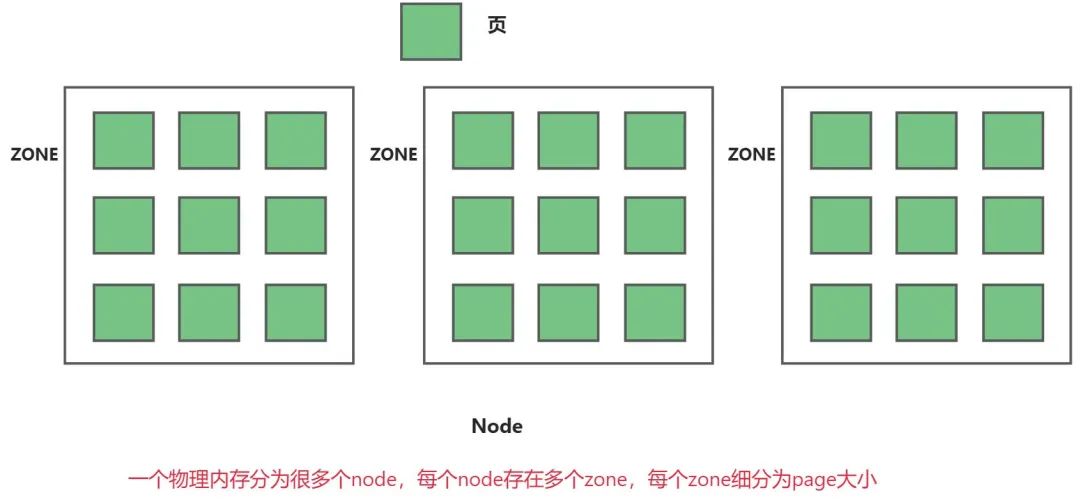
審核編輯:湯梓紅
-
ARM
+關(guān)注
關(guān)注
134文章
9286瀏覽量
374424 -
內(nèi)核
+關(guān)注
關(guān)注
3文章
1406瀏覽量
41039 -
Linux
+關(guān)注
關(guān)注
87文章
11442瀏覽量
212609 -
物理內(nèi)存
+關(guān)注
關(guān)注
0文章
11瀏覽量
8553 -
虛擬內(nèi)存
+關(guān)注
關(guān)注
0文章
78瀏覽量
8203
原文標(biāo)題:Linux內(nèi)核 | 物理內(nèi)存組織結(jié)構(gòu)
文章出處:【微信號(hào):嵌入式開發(fā)AIoT,微信公眾號(hào):嵌入式開發(fā)AIoT】歡迎添加關(guān)注!文章轉(zhuǎn)載請(qǐng)注明出處。
發(fā)布評(píng)論請(qǐng)先 登錄
一文詳解Linux內(nèi)核源碼組織結(jié)構(gòu)
Linux的內(nèi)存管理是什么,Linux的內(nèi)存管理詳解

走進(jìn)Linux內(nèi)存系統(tǒng)探尋內(nèi)存管理的機(jī)制和奧秘
Linux內(nèi)核內(nèi)存泄漏怎么辦
Linux內(nèi)存相關(guān)知識(shí)科普
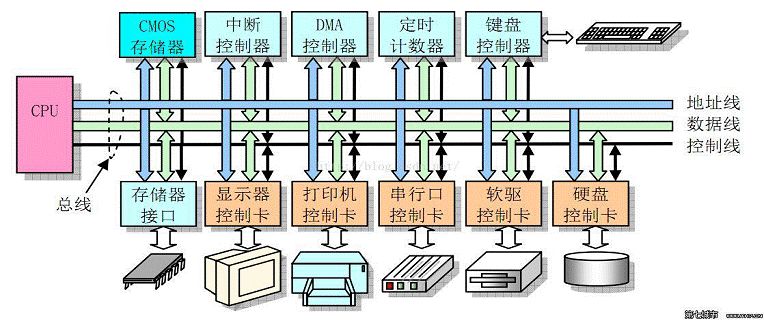
Linux內(nèi)核的物理內(nèi)存組織結(jié)構(gòu)詳解
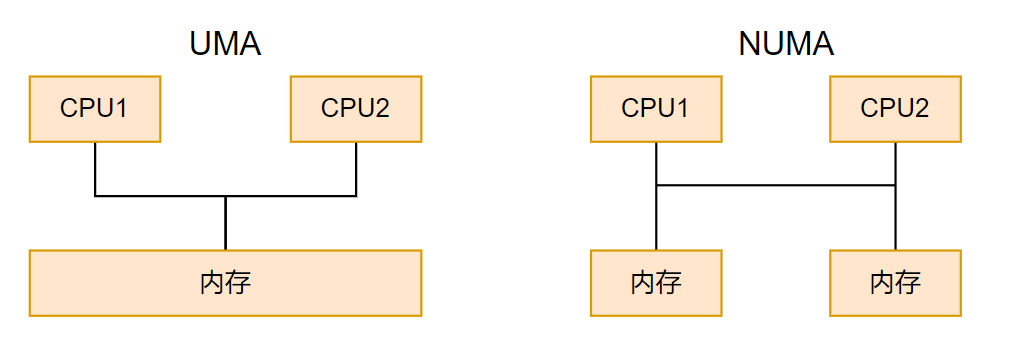
Linux內(nèi)核的內(nèi)存管理詳解
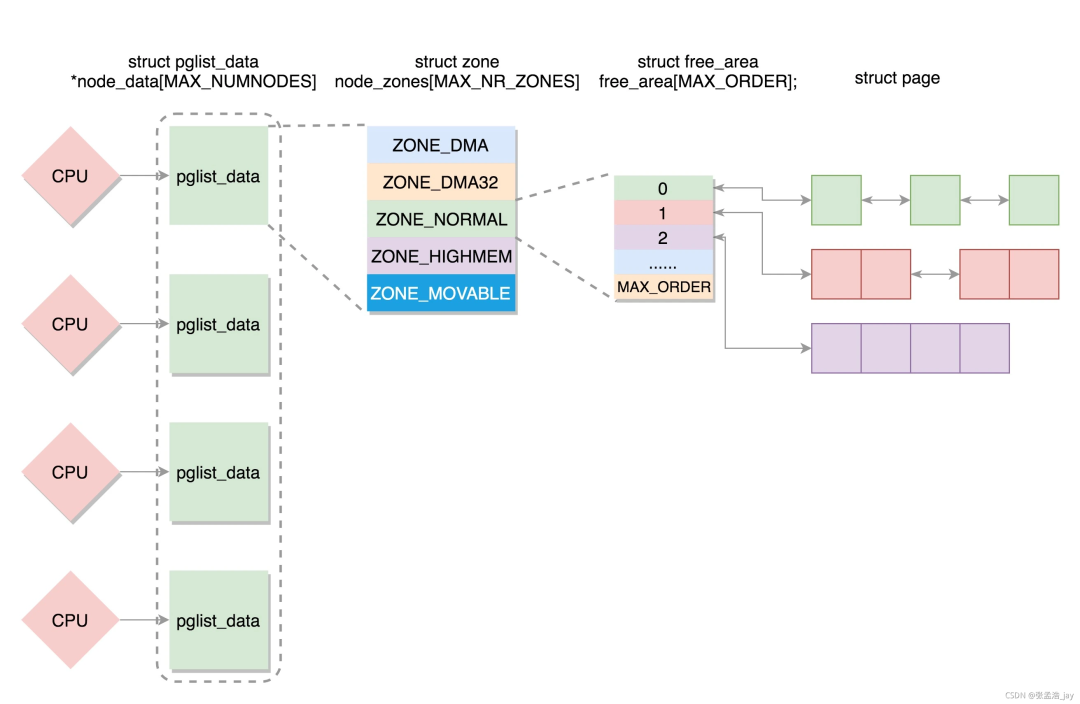
Linux內(nèi)核內(nèi)存管理之內(nèi)核非連續(xù)物理內(nèi)存分配

Linux內(nèi)核地址映射模型與Linux內(nèi)核高端內(nèi)存詳解
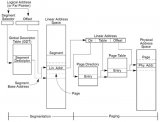
帶你了解Linux內(nèi)核體系結(jié)構(gòu)
Linux內(nèi)核結(jié)構(gòu)詳解
如何避免Linux的物理內(nèi)存碎片化

Linux0.11-內(nèi)存組織和進(jìn)程結(jié)構(gòu)
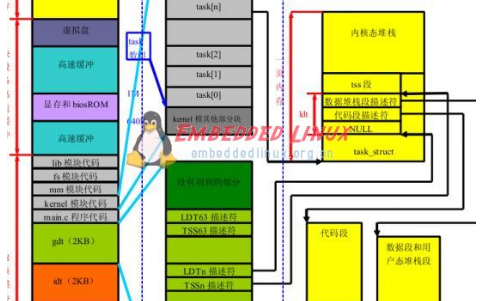
一文解析Linux內(nèi)存系統(tǒng)

STM32MP157 Linux系統(tǒng)移植開發(fā)篇7:Linux內(nèi)核目錄結(jié)構(gòu)詳解






 Linux內(nèi)核之物理內(nèi)存組織結(jié)構(gòu)
Linux內(nèi)核之物理內(nèi)存組織結(jié)構(gòu)










評(píng)論